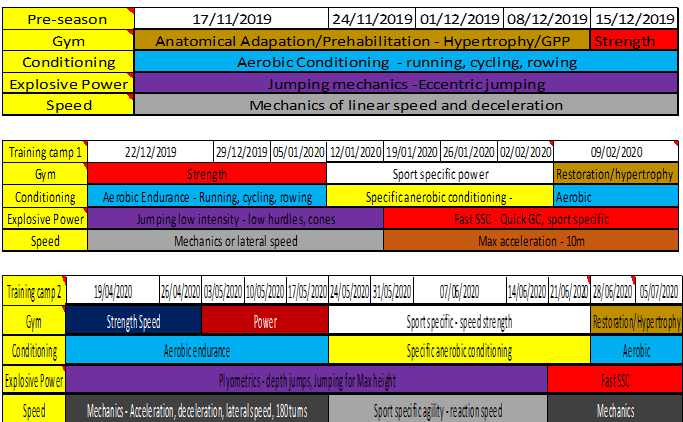🌟Energy system Physiology/Development🌟
Before we talk about energy system development and how I like to apply it with my athletes, we first must go over some key terms used in the explanation of the physiological changes and anatomical descriptions. Once we have glossed over these terms and you understand them, I’ll show how I apply energy system development within my facility and what I keep in mind.
🌟Maximum Oxygen Uptake🌟
“The highest rate of oxygen consumption attainable during maximal or exhaustive exercise” (Wilmore & Costill, 2005).
As we exercise our base levels of oxygen consumption increase but a time comes in our training where intensity of exercises continues to increase but without a rise in oxygen consumption. This is known as your VO2 Max, otherwise known as “maximal aerobic capacity”.
🌟VO2 max = maximal aerobic capacity🌟
Important to note that the max indicates that point where oxygen levels off, and the intensity of exercise increases.
Vo2 Peak is observed when O2 does not level off during a Vo2 max test, which is considered to generally be the best test to measure aerobic fitness and cardiorespiratory endurance. As well as being a good test for fitness it can also be used to measure a person’s aerobic potential. Like mentioned before, as exercise intensity increases so does oxygen intake but when oxygen is not consumed any further and oxygen plateaus, this is known as your Vo2 Max.
Now that we know about Vo2 max testing it is important to mention Lactate Threshold. Lactate is a by-product of anaerobic metabolism and produced at all levels of intensity. When lactate is produced quicker than it is absorbed by muscle cells then that indicates a person’s lactate threshold. Therefore, it is important to find threshold in athletes and endurance-based sports.
🌟What happens after threshold is reached and intensity continues to grow?
Once the production of lactate overtakes the absorption of lactate:
- Power production decreases
- Excessive H+ ions and lactate enter the blood system
- Muscle contractions become interfered with
Factors that change the rate at which lactate is produced:
🌟Exercise intensity
The harder the athlete/client works, the more lactate active muscles produce.
🌟Diet
If the athlete has low stores of glycogen – high intensity training will be short lived
🌟Training Status
Proper training develops four primary mechanisms to slow the rate of lactate accumulation:
- Higher mitochondrial density – allows for greater lactate resynthesis.
- Superior fatty acid oxidation – prevents lactate production at submaximal exercise intensities. The muscles will preferably burn fat over glycogen, and this will preserve glycogen as a fuel source for continued exercise. Imagine a marathon runner running towards the finish line after a long race.
- Greater capillary density – improves both oxygen delivery to and lactate removal from the active muscles.
- Muscle fibre type composition – Slow twitch (Type I) muscle fibres produce less lactate at a given workload than fast twitch (Type II) muscle fibres.
🌟Distribution of workload
A large muscle mass working at a moderate intensity will produce less excess lactate than a small muscle mass working at a high intensity.
It is important to remember that Vo2 max testing shows both maximum oxygen uptake and also the lactate threshold. Some people will feel a vo2 test is hard on muscular endurance rather than respiratory. For example, if a marathon runner finishes a test they might report the cardiorespiratory system reached max but somebody from a sport where legs are not used such as a kayaker, might finish the test due to not having the endurance in the legs. With this in mind it is important to use equipment specific to the person and also ask the person how they felt during it and after it to get more details on the accuracy of the test.
The lactate threshold is measured as ml of oxygen, per min, per kilo of body weight. A person can have a low vo2 score but a high lactate threshold test so vo2 testing is just one side of a complicated story. For example, a person that has good stride economy through power and strength development, won’t work as hard as a person with lower economy and therefore can work for longer. It would be advisable to increase all factors such as technique, strength and power for stride economy and then build energy system to allow the person to do continuous work.
🌟Now, what is the difference between the anaerobic and aerobic energy systems?
To put it simply, aerobic work is with oxygen and prioritises fats as a fuel source and anaerobic mainly utilises carbohydrates as a fuel source and is without the presence of oxygen.
It is important to note that all energy systems use different types of fuel at different times but there is always a main fuel source for whichever system you are looking to develop.
🌟Phosphagen System
Adenosine triphosphate (ATP) is a molecule that provides energy for all types of movement. The phosphagen system utilizes ATP for highly intensive exercise or activities that last from 10 – 30 seconds. For example, a 100m sprint. ATP stores are limited so once 30 seconds has past of intense exercise your body will tap in the next system, the glycolytic system
🌟Glycolytic system
The glycolytic systems main fuel source is carbohydrates which help to produce ATP. This fuel system is utilised in exercises lasting 30 seconds to 3 minutes. For example, a 3-minute round of kickboxing. Once this system has ran its course another system comes into effect, the oxidative system.
🌟Oxidative system
The oxidative system is aerobic and as mentioned earlier the aerobic system uses oxygen along with fats to produce energy. The other mentioned energy systems use predominantly carbohydrates as fuel. The oxidative system is used for training sessions that require low to moderate intensity for a long period of time. For example, a marathon runner. A good way to build the oxidative system would be to use the cardiac output method.
Cardiac output method requires exercise with a low intensity for 20 to 60 mins. When I coach clients, I like to talk to them every now and again to analyse the intensity of effort. This method should be about RPE ¾ on a scale of 10. This method is great for improving the hearts’ ability to pump oxygenated blood to working systems over time.
Now that you have gone through a pretty quick description of the energy systems, I will try to best explain how I programme the development of these systems.
Below is an example of a general population client strength and conditioning weekly training schedule.
| Monday | Tuesday | Wednesday | Thursday | Friday | Saturday | Sunday |
| Lower body | AMRAP
(Glycolytic system)
|
Upper body | Aerobic capacity work
(Oxidative system) |
Full body | Tabata
(Phosphagen system) |
Rest |
This structure is designed in a concurrent system which is my preferred way of programming if it is suitable for the individual.
Another way to build the energy systems would be to use block periodisation which involves focusing on one energy system for a determined amount of time and use that to build on for the next system. Remember that explosive power training and the specificity of the sport will also develop the systems needed for the sport so a stress management system would be advised. For example, steady state training in the pre-season block could see increase in time from 20-minute runs x2 per week to eventually being able to steadily train for 120 in elite athletes. This can be anything from Jogging, swimming, rowing, cycling, sled dragging etc… As long as it’s no more than 75% of maximum heart rate and/or working below that lactate threshold. From there, anaerobic conditioning can be built and then progressed onto sport specific conditioning.
For example, 6 x 15 second sprints at max effort on assault bike with full recovery in between rounds. Then onto repeated wrestling shots for 15 seconds with sandbag carries as recovery to mimic a grappling scenario.
🌟The way you programme and the exercises you use depends on:
- Demands of the sport
- Needs and wants of the athlete/client
- Your creativity and the artistic side of your coaching
- Your knowledge of the sport and athlete
If you want to work with me to improve your strength, conditioning or your recovery from training/sports, then leave an email with the word “interested” and we can discuss at mackelitejmc@gmail.com

